In a cabin by a lake, Thoreau, after his bath as usual, would sit in the sunlight at the door from sunrise until noon, gazing in solitary reverie, surrounded by pine and hickory and paint trees and silence, while the birds would chirp around him, until the sun shone in his west window and reminded him of the passage of time. In those days he grew up, as corn grows at night.
It's 1845. It was in this inspired little house that Thoreau wrote his famous Walden Lake.

He probably didn't expect that 170 years later, modern society would once again revive the Little House movement.
Not only in the midst of natural wilderness.
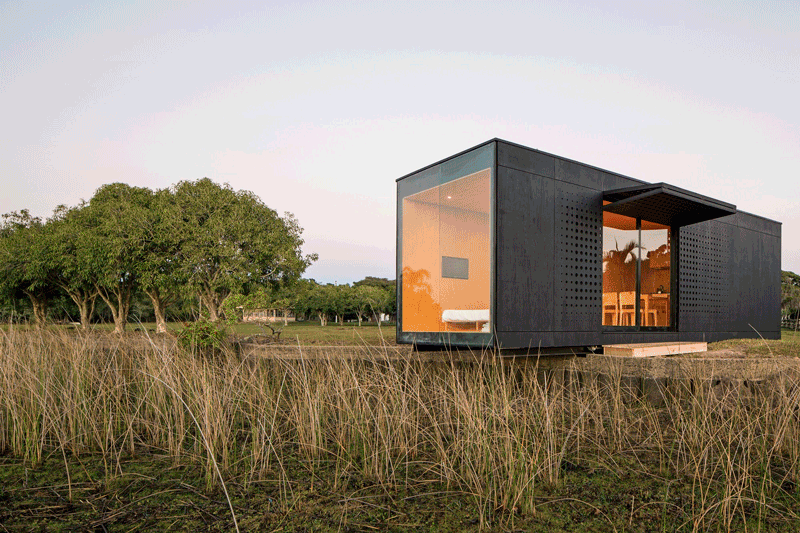
▲ Image from: ArchDaily
Also in the midst of tall buildings.
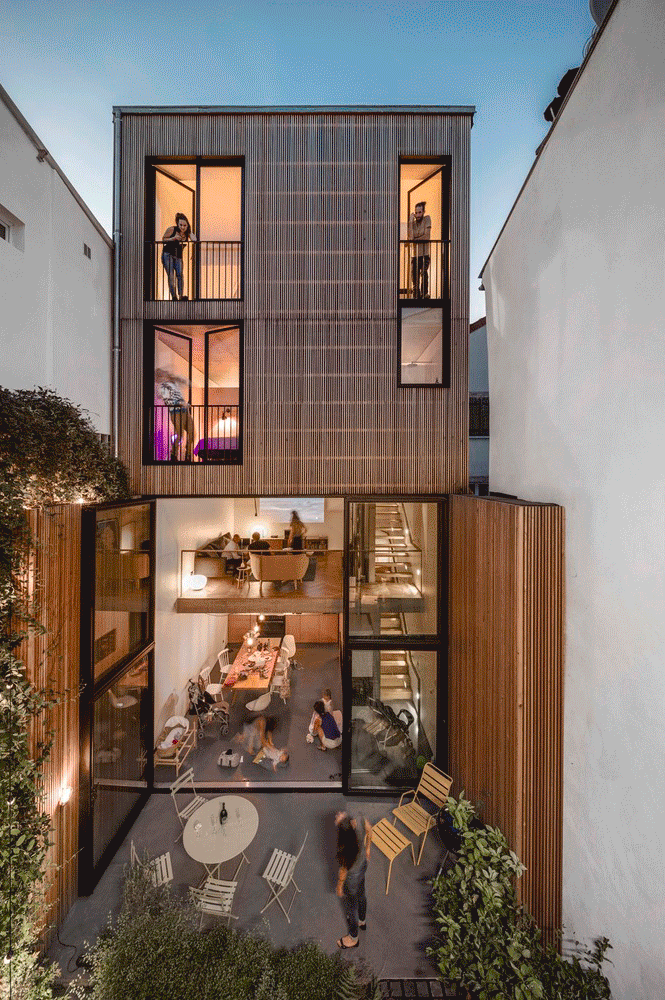
▲ Image from: ArchDaily
New - Tiny House Trend
Tiny houses aren't anything new.
After all to talk about the history of the tiny house, it goes back to the first day humans spent in caves, and a little closer, to the small, widely inhabited by blacks in late 19th century American cities single-story buildings - but the architecture of the modern tiny house movement is more innovative, portable, simple, economical, and sustainable.
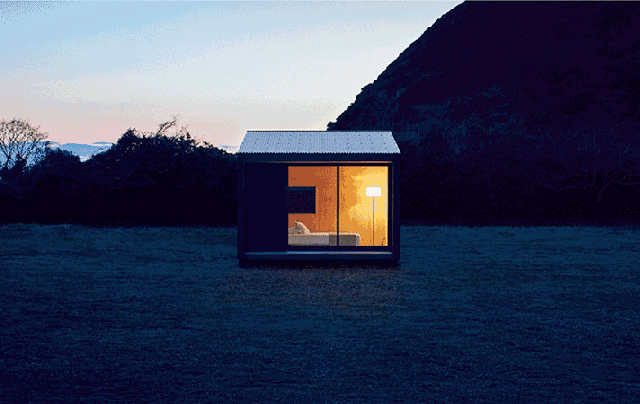
▲Image from: MUJI
This trend has become popular over the past decade.
In Walden Lake, Thoreau's own log cabin became the blueprint for the early days of the tiny house movement. Some consider the 1970s to be the time when the tiny house movement began, when artists, writers, and architects such as Allan Wexler and Lester Walker were publishing work on living in miniature spaces, and tiny house guides were popping up all over the place.
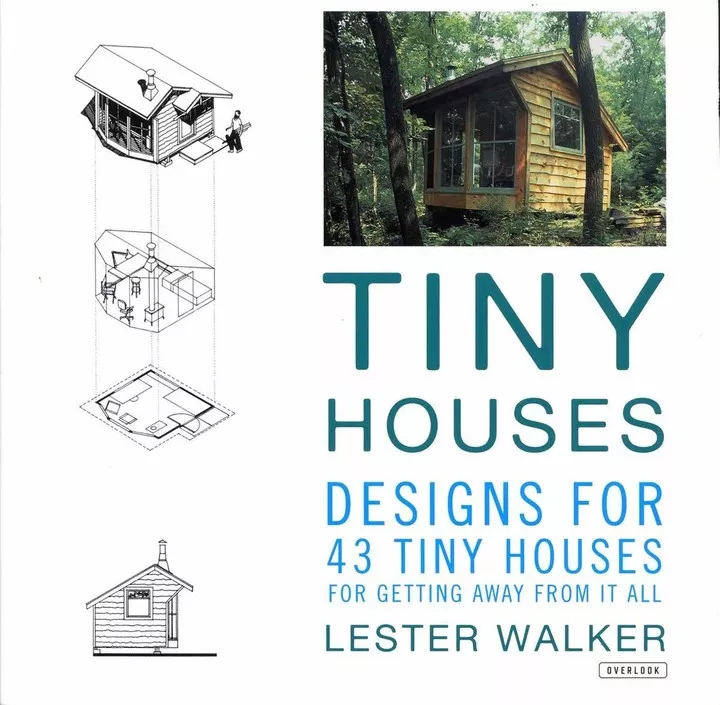
One person even started a company, Tumbleweed Tiny House Company, to design and build RVs on wheels that were less than 10 square meters, starting a trend of developing 'tiny house plans'.
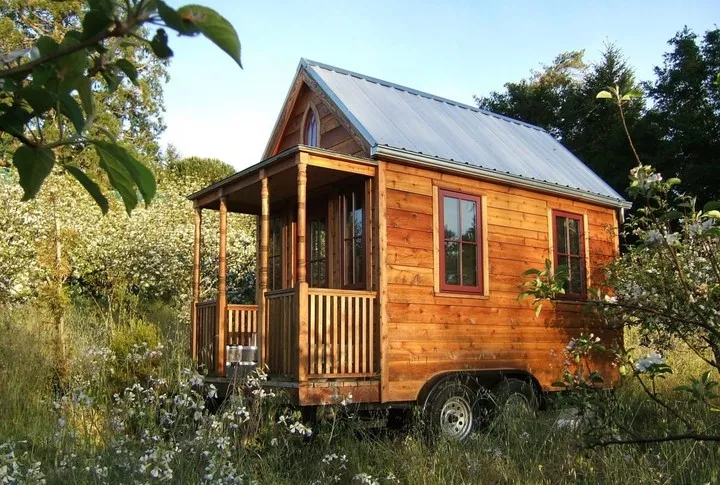
When the global recession hit in 2008, affordable, flexible living in smaller homes received more attention.
Those small houses of a few dozen square feet are often used as accessory dwelling units, becoming replacements for the larger houses of the past, and also morphing into small offices, guest houses, and places for the elderly to retire and children to study and live.
But the tiny houses of these past periods were more like an outlier niche hobby and a compulsion to survive.
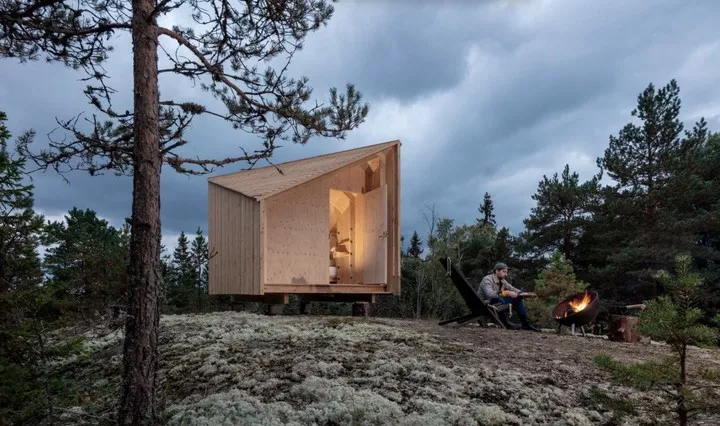
Starting in 2012, the internet mediums of Facebook, YouTube and Instagram really drove the "tiny house movement" boom, with Google search trends showing "Tiny house' has grown exponentially in popularity over the last decade, with over 5 million posts on instagram.
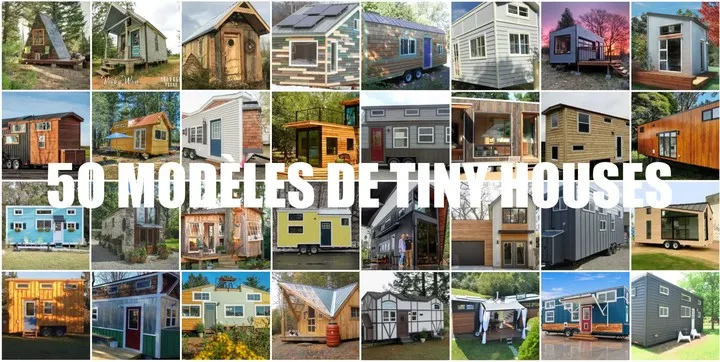
Netflix's reality show Cabin Nation, British architect George Clarke's series, plus numerous reports on tiny houses in various mainstream media, have created a lot of buzz online about the tiny house movement, and many young people have begun to pursue the creative and inspiring miniature houses to create a new miniature life for themselves.
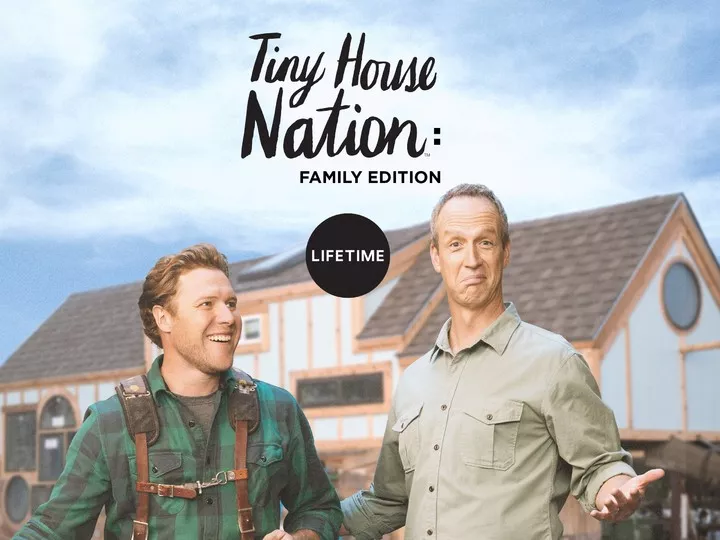
The "Little House Movement" is gradually becoming a social phenomenon.
Bands of tiny house enthusiasts are getting 'manic' - a Tiny House Jamboree was held in Colorado, USA in 2015, which drew over 40,000 visitors, and the same year the Tiny House Association, a non-profit organization, was formed in the USA.
Similar events are regularly held in countries around the world to promote the benefits and bright future of tiny house living, and the year before last Sydney kicked off a tiny house carnival, inviting all sorts of relevant celebrities to speak and sell tiny houses to visitors to the city.
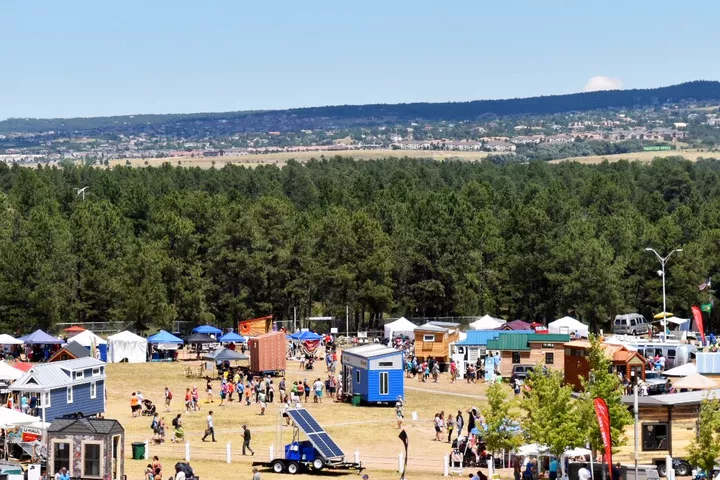
▲Tiny House Jamboree, image via: Architect Magazine
The data projects that the tiny house market is expected to grow by another $3.33 billion by 2025.
Of course, the epidemic is behind the tiny house trend of the last two years: at a time when everyone is away from the crowds and stuck in the city because of the new coronavirus, a tiny house in nature has become the most attractive utopia.
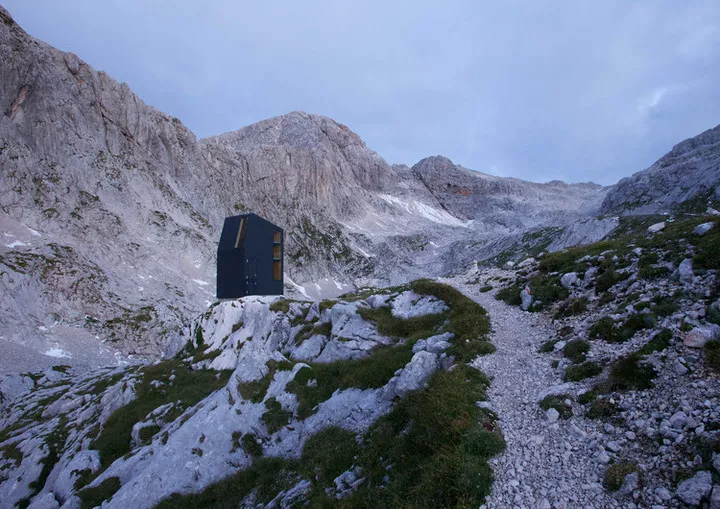
▲ Photo from: Alpine Bivouac Mountain Camp / Miha Kajzelj architect
At the same time the shortage of available space and housing in cities and the new trend towards environmentally sustainable consumption has inspired the making and transformation of micro spaces in cities.
Tiny houses are becoming a modern way of life.
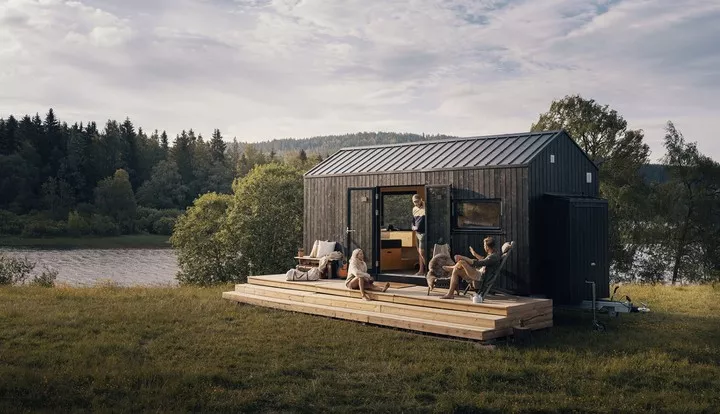
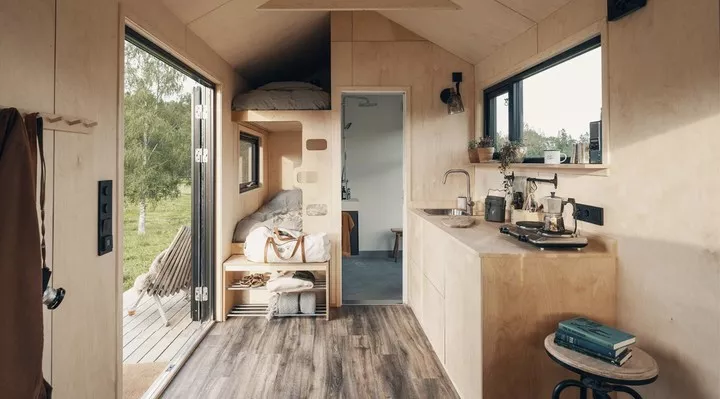
▲ Image from: norske mikrohus
The double life of a small house
[Nature Utopia]
When many people think of tiny houses, the first thing that comes to mind is up in the middle of forests, seashores, mountains, and wilderness, dwellings that seem to exist only in poetry, movies, and dreams.
Realistic small houses, most commonly also the cabins that are made in various nature scenes.
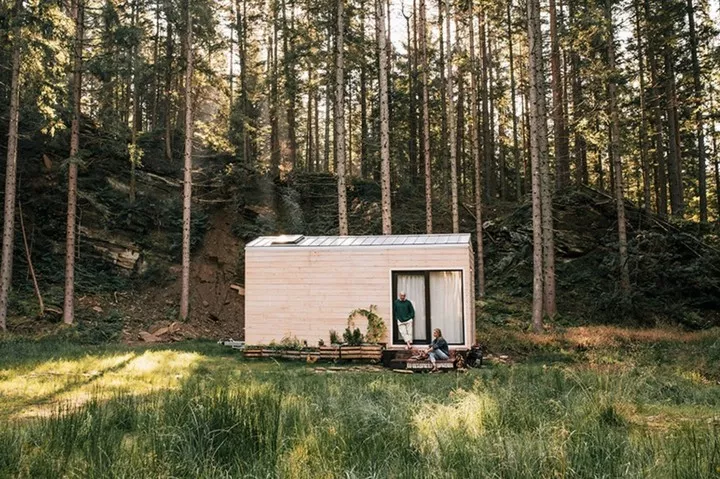
▲ Photos from: magda tracz, anna busch and monika binkowska
They are usually smaller than 40 square meters, extremely easy to make, far from the city, standing on a quiet piece of land, looking like a fairy tale come true, fulfilling all our fantasies of a natural home: the breeze, the wood, the fireplace, the rustling of the leaves, the warm carpet under our feet.
Most of these small houses are not long-term homes for modern people, but rather for people to rest and relax in the middle of a short trip.
It's a return to instinctive comfort where people can focus and immerse themselves in life itself, away from the drudgery of material and social pressures.
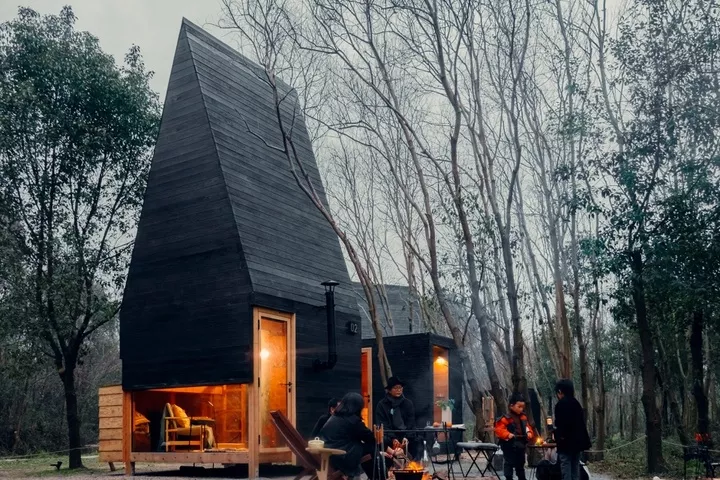
▲ Photo from: One World - Nature Camp
Musk sits in a mansion, but also prefers to live in a $50,000 house next to his space company, SpaceX, with only 37 square meters. 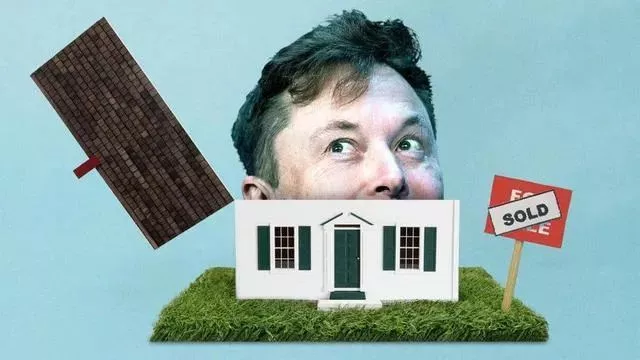 The other is the mobile tiny house, or RV, a favorite of the nomadic crowd.
The other is the mobile tiny house, or RV, a favorite of the nomadic crowd.
It fulfills the desire to be 'always on the road' and there is no need to worry about where to stay or the cost of transport - one caravan, all inclusive.
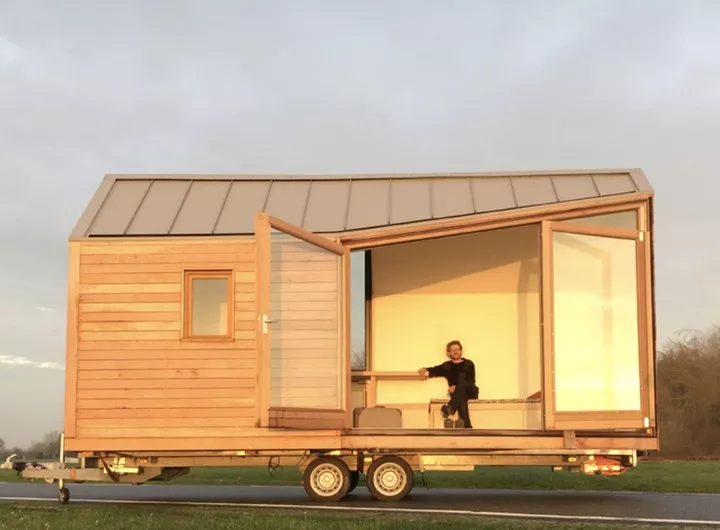
▲ Image from: norske mikrohus
A retired couple in Portugal lived in a small caravan called Adraga, which had solar panels, a rainwater collector, and a vegetable and fruit growing board, among other things, to meet their basic needs.
During that time, they were free from this busy functioning society and enjoyed a slow and self-sufficient life every day.
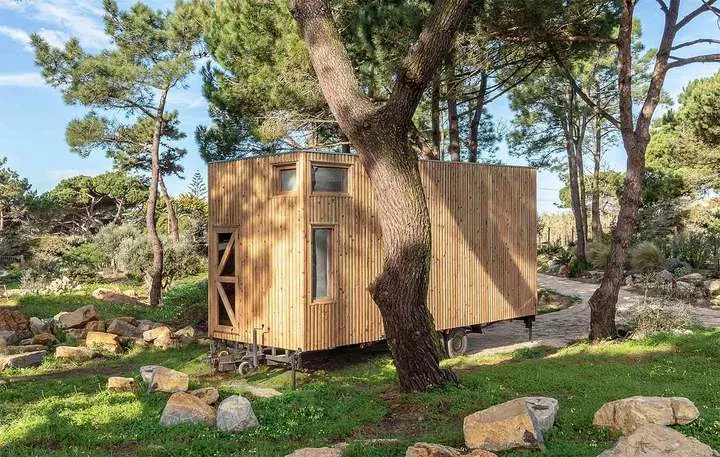
▲ Adraga
The small house in the midst of nature carries more of our mental vision in a society full of heavy stress.
In the eyes of more artists and emerging architects, they create small installation spaces that are new spiritual and cultural totems.
These small houses are made with more attention to design, craftsmanship and detail, conveying the aesthetics and ideology of the new generation.
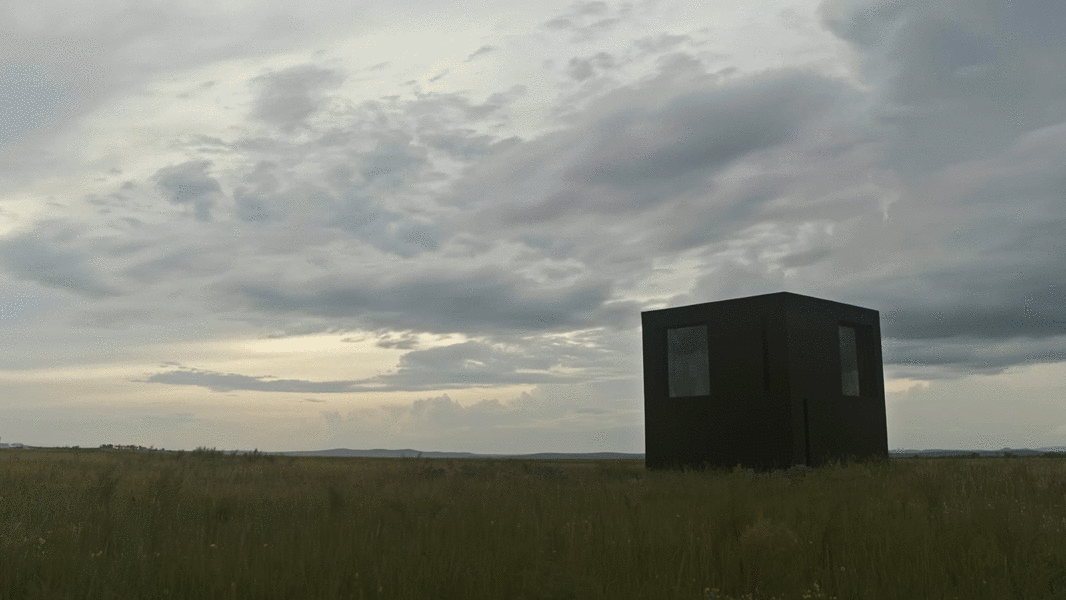 ▲ Singer Chen Hongyu has built a small mysterious black house right on the grasslands of his hometown Erguna, called Zong Fang Ji, where a "solitary experience The project invites people to come and leave their feelings and thoughts here.
▲ Singer Chen Hongyu has built a small mysterious black house right on the grasslands of his hometown Erguna, called Zong Fang Ji, where a "solitary experience The project invites people to come and leave their feelings and thoughts here.
[New City Mailing House]
The tiny house trend has spread from nature to the city, and its characteristics have hit on some urban living dilemmas.
For example, the issue of home ownership and the housing crisis.
The United Nations has released a report showing that 60% of the world's population is expected to live in cities by 2030, and more and more migrant workers are now starting to flock to first-tier cities.
They will choose to live in cheaper small rentals, micro-apartments, or make a few dozen square feet of space with innovative design modifications, turning it into a small, fully furnished micro-home.
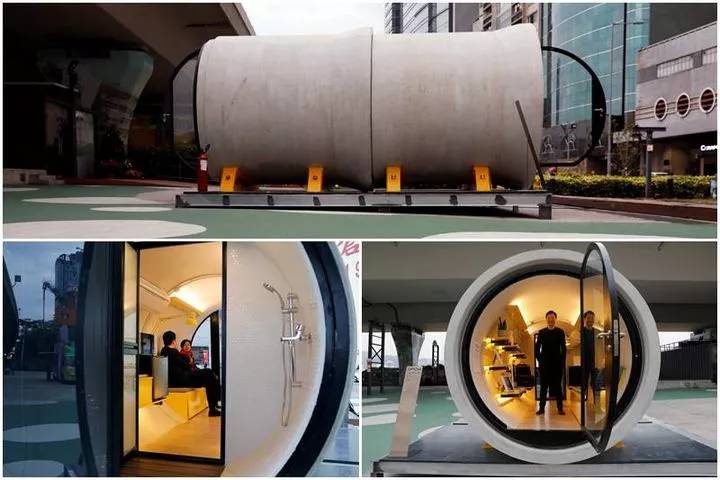
▲ Hong Kong OPOD Plumbing Room
IKEA has also produced many small space transformation guides, and even rented out a small 10 square meter room in Japan, cramming in one room, one bathroom and one office area, teaching people how easy it is to create independent, flexible mini spaces in crowded cities.
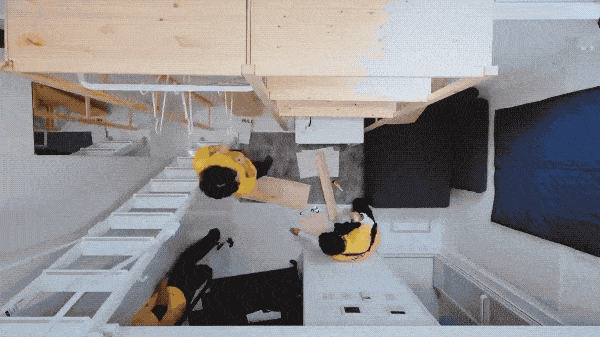
While larger homes are the norm in the US, the popularity of smaller homes has been on the rise in recent years, with the average cost of buying a home in the US in 2022 ranging from $119,000-$615,000, while a smaller home may cost as little as $8,000, making it a good fit for many young people to buy and live in as a transitional home without the stress of carrying a large mortgage payment.
It's not just in the cost of buying a home that gets lower, a smaller home also means more energy efficient, using less water, electricity and gas, and many tiny houses are equipped with solar panels, which also saves even more money.
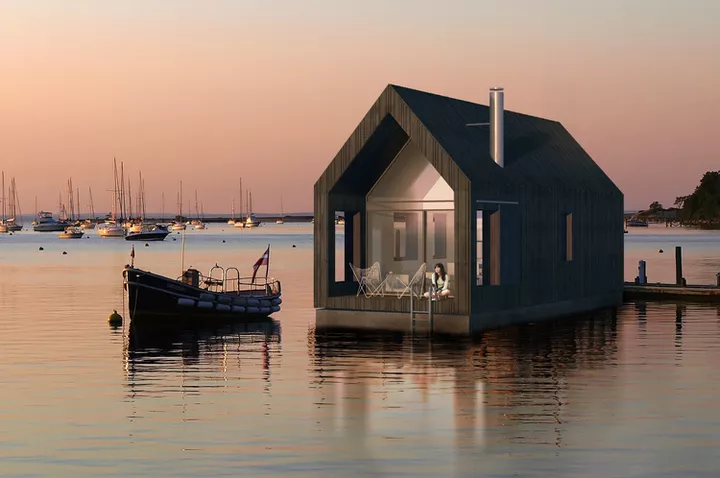
Because there is not much space to stack items, occupants also think more carefully about each item they place an order for, creating a conscious 'disconnection'.
Thus, tiny houses also fit into the trend of being less carbon, environmentally friendly and sustainable.
In addition, many people around the globe are even homeless because of epidemics and disasters, and WRI (World Resources Institute) data estimates that 1.6 billion people will lack proper shelter by 2025.
A small house can also be a practical emergency shelter, giving them temporary solace during times of most pressing housing needs.
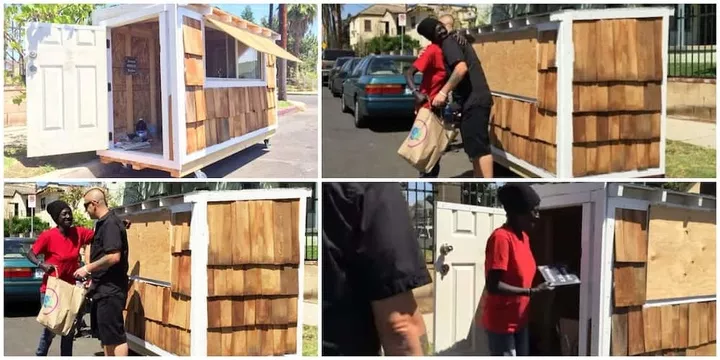 ▲ Elvis Summers launched The Tiny House campaign to build emergency tiny house shelters for the homeless, neglected and forgotten. building emergency tiny house shelters until they find affordable housing.
▲ Elvis Summers launched The Tiny House campaign to build emergency tiny house shelters for the homeless, neglected and forgotten. building emergency tiny house shelters until they find affordable housing.
Tiny houses in big cities are more inclusive and practical than those in the midst of nature.
Imperfect little house, just a new option
The above, probably makes you impatient to get into a tiny house.
But what needs to be rationalized is that while tiny houses are getting hotter, it's not perfect, it's not idealized, and it's not for everyone.
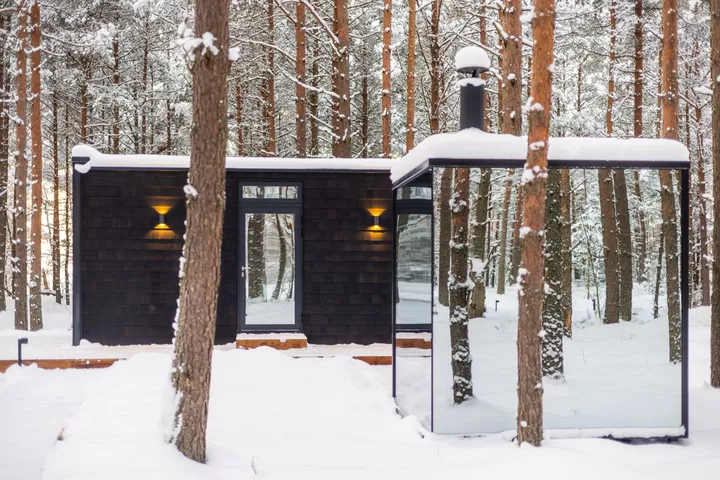
▲ Image from: ÖÖD
One, you have to put a lot of effort into remodeling the space and also suffer the lack of a small space.
Because design is at the heart of a tiny house, how to optimize vertical space and how to make a small space more versatile are both priorities, the design costs are not cheap and the building process is not easy.
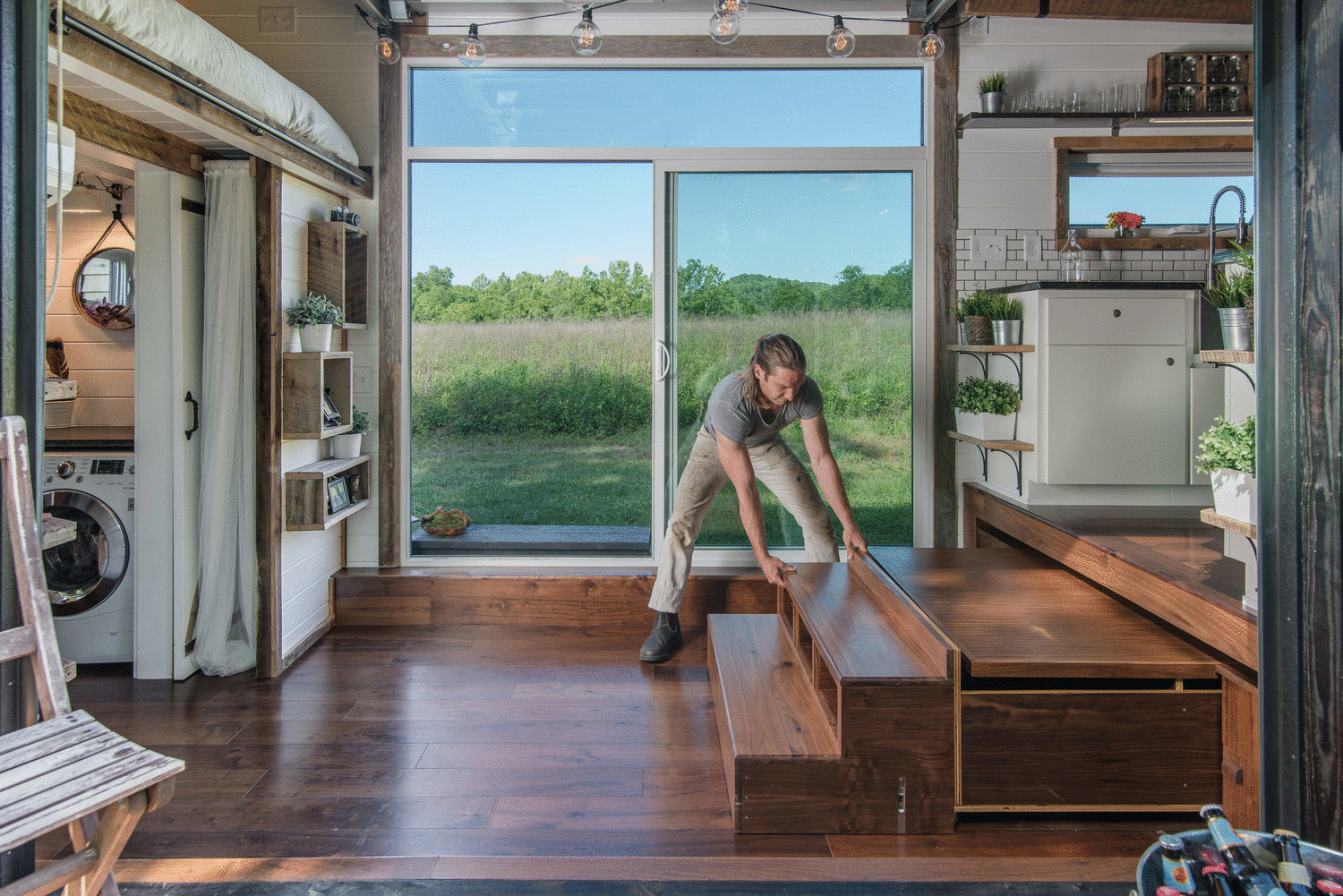
It's also easy to have a crisis living in a small house than a high-rise community and a big house, especially an RV - after all, people are born as a species that wants to land.
One RV dweller in Washington State, for one, said it always felt like the house was shaking, affected by the outside world, disturbed by the weather, very badly, and most worrisome to him was.
It feels like we are separate from the ground because we have wheels under our house and it is a constant reminder that I will always be in this fragile housing situation.
Two, with some gains come some losses - less space means you have to give up a lot of life's entertainment.
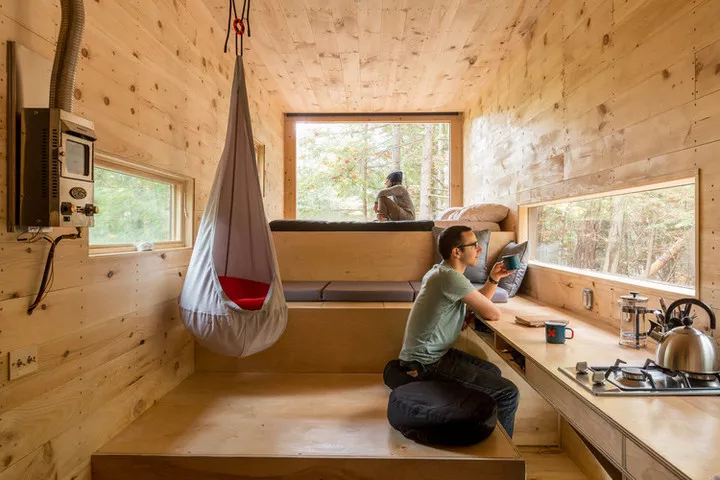
For example, you can't take a bath because you can't fit a bathtub in a small house; you can't cook all kinds of food because you can't fit so many pots and pans, and a frying session might be full of grease and smoke, and the unpleasant toilet might be right next to it; you can't invite friends or family over because there is probably only one bed in the house, and a table won't even seat 10 people; if you also want large equipment such as projectors and fitness equipment, it's even more impossible It's even more impossible if you also want large equipment such as projectors and gym equipment ......
Three, living in a small space for a long period of time has some potential effects on one's physical and mental health as well.
Because it's overcrowded, it can give a stuffy and depressing feeling in the long run, and if a duplex structure is made in a small space, you can't even stand up in bed, making it even less suitable for claustrophobia.
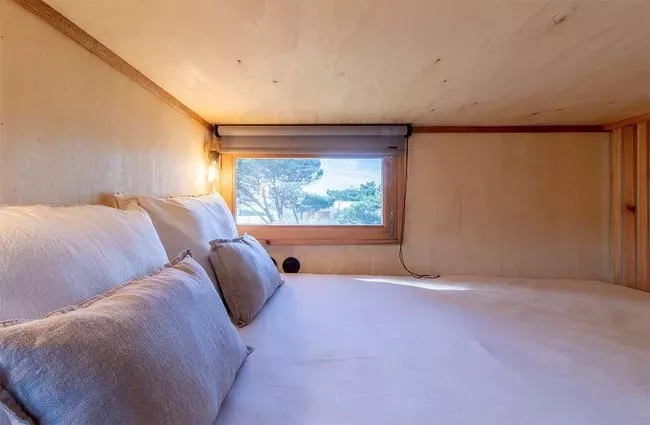
Occasionally going on vacation to a tiny house for a few days to relax and unwind might be okay, but staying for a few years and completely changing your lifestyle is a huge test.
Fourth, a very real problem, small houses are difficult to resell.
Compared to the previous generation, most of the new generation is the 'renter generation'. If you buy a small house as a transitional period to live in, and then buy a bigger house when you earn money, it is likely that the small house will not resell and will usually depreciate in value.
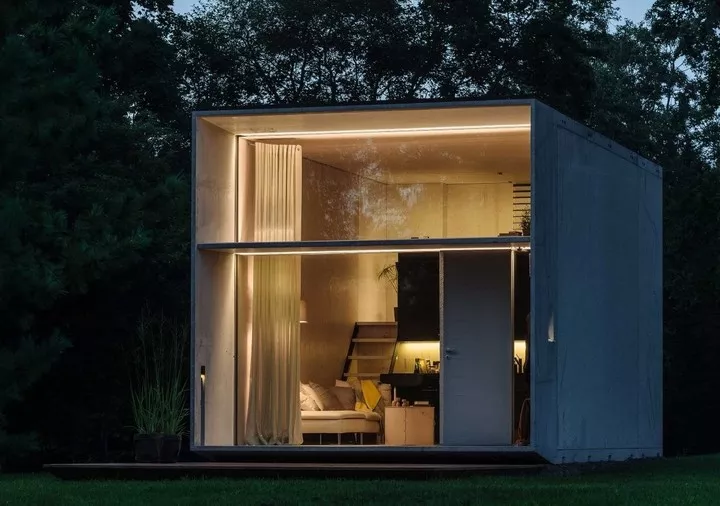
Because the small house itself is on a small lot with little foundation value and little upside, an RV is even less likely to sell if it has nothing unique to offer, because it's on the road at all times and it probably won't be long before it's broken to pieces.
Five, the law, is the single biggest challenge for the little house.
Laws and regulations regarding the purchase and occupancy of tiny houses vary in various countries and even regions around the world. Tiny houses are considered illegal in the eyes of most local governments in the United States; in Canada, the legality of a tiny house depends on the location of the house and whether it is mobile or stationary; in Toronto, a tiny house must have a building permit and be connected to the national grid ......
Tiny houses without building codes mean they may not be built to certain safety standards, and there are a lot of gray areas than with traditional homes.
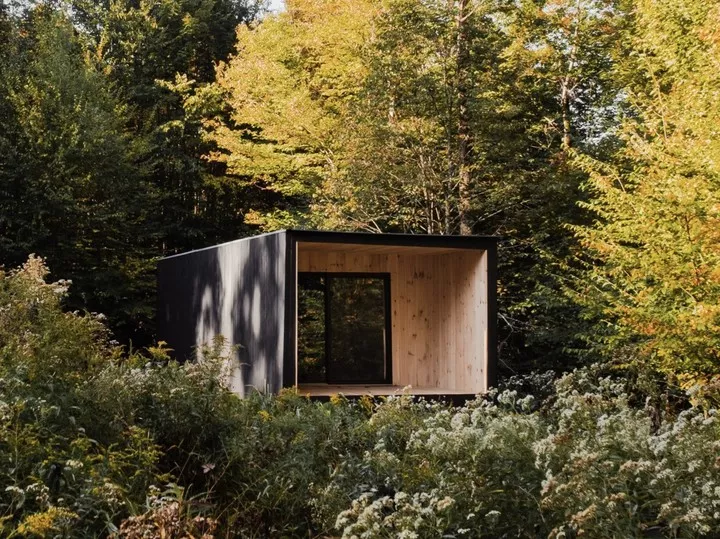
RVs then face an even bigger obstacle to legal parking, and getting a permit to park them is not only a difficult process but expensive, so your dream of traveling the world by RV may only be possible with a drive in a legal area.
But as the tiny house trend gets hotter and hotter, initiatives around the world regarding the legality of tiny houses are improving, and the industry continues to evolve and improve.
Finally, the least we can note about the 'Little House Movement' is that
- A small house and a large house, each with its own benefits.
- Rather than being a goal in life, a tiny house provides a solution.
- Tiny houses essentially have nothing to do with popularity, it's important that we go through it to create the lifestyle we want to live.
- The popularity of the tiny house easily magnifies its potential, and with a different perspective, we can also see the romanticization of poverty behind it, as well as the structural inequalities of society.
- We are used to having more and more, and the spirit of a small house is to make us think about what is most valuable in life.